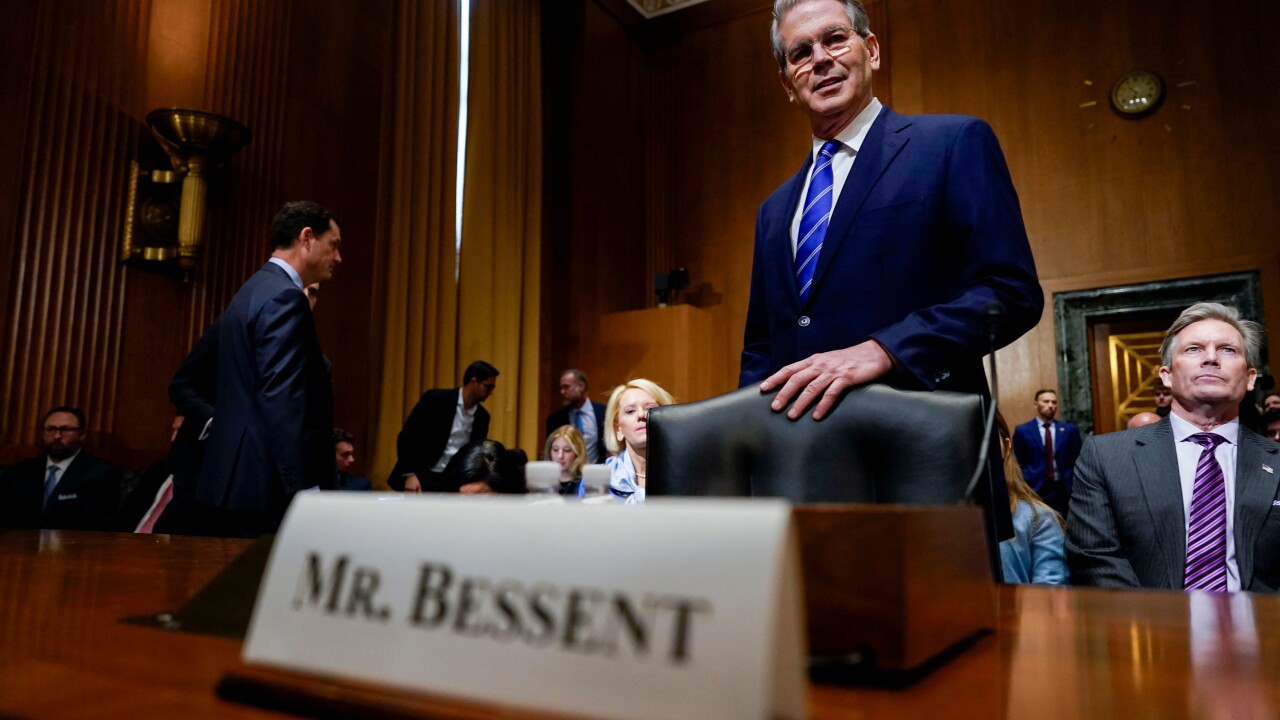In the elite card sector, issuers have been aggressively honing their rewards programs and offering hefty bonuses to those who switch. It's a golden opportunity to win the long-term spending of a wealthy customer base, but only if banks can keep those customers on board after the sparkle fades from that initial offer.
JPMorgan Chase & Co. turned heads with the lush rewards for its new Sapphire Reserve credit card — so much that it briefly ran out of cards — and American Express Co. recently responded by
But can any of them hold their own against a credit card that is literally encased in gold?
Four times the weight of a standard credit card, Luxury Card’s top-tier card, issued by Barclaycard, is based on a steel-and-carbon body encased in gold that’s laser-etched with the customer’s name. Introduced last year, the 24K gold-plated card is designed for a consumer who wants to show it off rather than hop from card to card for the next big offer.

“It’s a statement piece, a real conversation-starter in business and social settings,” said Marina Kissam, vice president of customer experience at New York-based Luxury Card, which recently won a patent for its gilded card design.
As outrageous as the Luxury Card sounds, it's a natural extension of the direction the industry is taking. To turn a profit, issuers need to keep customers around for at least a few years, and the escalating race to top rivals’ rewards is beginning to undermine that goal, said Brian Riley, credit card director at Mercator Advisory Group.
“The elite card issuers are working now to hit on a value proposition that doesn’t depend on these rich introductory offers, because profits require customer longevity, not constant turnover,” Riley said.
Luxury Card is playing up bling at a time when credit card issuers as a whole are paying more
Market research since the card launched last year suggests the 24K card’s tactile dimension particularly appeals to its users, according to Kissam. “People tell us they really enjoy pocketing that metal."
Consumers who get Luxury Card’s gold credit card accrue 1 point per dollar and may redeem 50,000 points for $1,000 in cash or airfare, which can more than offset the annual fee for high spenders. The gold card program also includes access to personalized concierge services and exclusive access to the Luxury Lounge in Manhattan, where customers receive complimentary beverages, WiFi and help with shopping and travel.
Instead of dangling special introductory packages for new customers, Luxury Card keeps its rewards levels stable. “We’ve had quite a few existing customers upgrade to the Gold Card,” Kissam said, noting that its customers are pretty evenly divided between men and women.
Luxury Card explored the high-end credit card market for years before launching its 24K gold card, Kissam said. Its first product was the $495 Black Card, introduced in 2008 with its issuing partner, Barclaycard, under Visa’s logo. Two years ago Luxury relaunched its portfolio under the Mastercard brand, and last year it rolled out the Gold Card and the $195 Titanium Card, each offering different reward tiers, and the portfolio has seen steady growth for each version, Kissam said.
Luxury Card, operated by a holding company based in Jackson Hole, Wyo., declined to disclose how many consumers use its cards.
Analysts suggest most high-end spenders aren't easily wowed by other payment form factors, such as mobile payments.
“The physicality of the card for an upscale customer is important, particularly in business situations where contactless payments or EMV technology isn’t yet available,” said Thad Peterson, a senior analyst with Aite Group. “And there’s the straight-up ego factor of pulling out your prestige card in front of your friends, which isn’t really replicable with a smartphone.”





